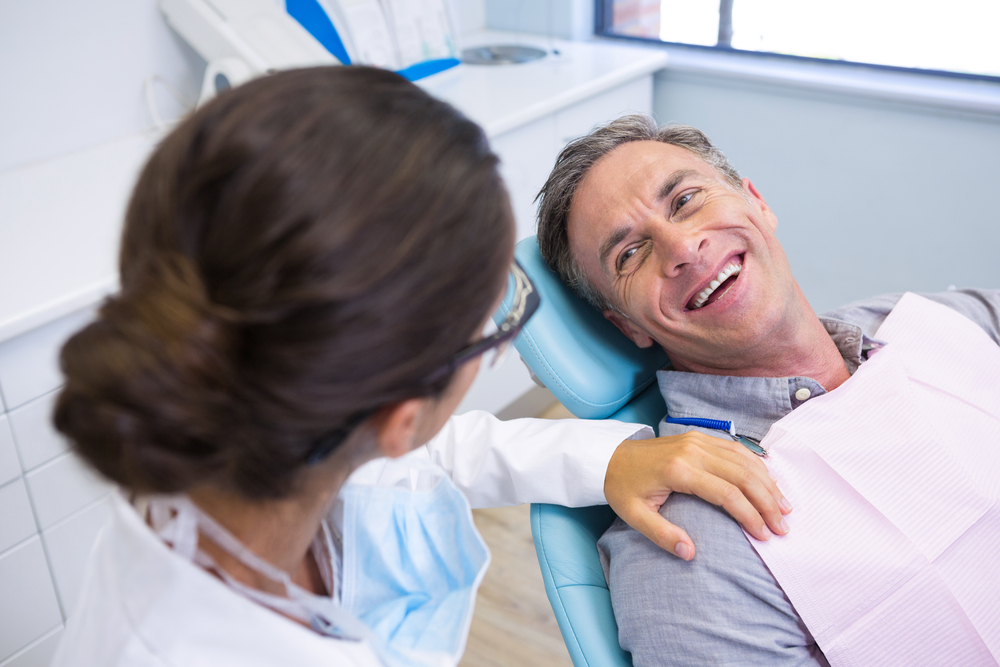What Is Socket Preservation?
After a tooth extraction, the underlying gum and jaw are exposed, leaving behind a hole or “socket.” This living tissue is exposed, leaving it open to infections and bacteria that can cause a wide range of issues. Even if the socket is kept clean, the jawbone will no longer receive the same type of stimulation it did when the tooth was present, causing the living tissue of the mouth to shift and shrink. In some cases the jawbone of patients who have had a tooth extracted shrinks as much as 50% in just six months, leading to a variety of complications. If you need to remove a tooth due to decay, damage, or periodontal disease, consider using a bone graft for safe and manageable socket preservation.
Socket preservation, also known as alveolar ridge preservation, is when a dentist uses a collagen plug or bone grafting procedure to fill the empty socket left behind after a tooth extraction. This preserves the socket and prevents any foreign matter from entering the empty space. It also allows for stimulation similar to when the tooth was in place, preventing or slowing down jawbone shrinkage. Usually the dentist will also put a collagen or membrane over the filled-in socket and suture the gum tissue to fill in all the hollow space. The gum tissue will naturally regrow over the membrane and completely seal off the extraction site. Socket extractions are a fairly simple procedure, and usually only take one to two weeks to recover from.
Tools for Socket Preservation
Several tools are used to ensure a safe extraction site that will heal quickly. Let's take an in-depth look at the various tools and materials used to ensure the mouth heals properly.
Crystals - OsteoGen crystals are made from calcium bone apatite and form a dental bone graft within the socket site. They are usually available in vials or prefilled syringes so they can be packed in, or injected into the area. They are hydrophobic and will draw in blood from the extraction site to assist with the regrowth process.
Plugs - OsteoGen plugs are the one-step bone grafting solution for socket preservation. They are collagen-filled plugs that are combined with bioactive resorbable calcium apatite from bovine achilles tendon. This means that the body can absorb these plugs in order to heal and grow new gum tissue inside the mouth naturally. Bovine achilles tendon allograft is easy for the body to absorb efficiently, eliminating the need for mixing your own allograft, significantly reducing the chances of graft washout. OsteoGen plugs have a four-year shelf life and have been clinically effective for use with implants for over 30 years.
Bone Grafts - Human bone allograft can also be used for socket preservation. Collected from human cadaveric donors, these mineralized bone matrixes are available in several varieties and are ideal for reinforcing the jawbone around dental implants. Mineralized cancellous bone matrix allograft promotes rapid cellular growth and bone regeneration by providing scaffolding for new bone growth. The cancellous bone powder is small enough to tightly fill small voids and add surface support to the extraction site.
Membranes - Membranes and wound dressings are used to seal in the extraction site after the void has been filled with allograft or collagen. OsteoGen and CollaForm both produce resorbable pericardium membranes that can be absorbed by the body and provide a secure seal that keeps out foreign material. Collagen wound dressing is also sometimes used alongside a membrane to provide a moist healing environment and prevent blood clots or dry socket.
A tooth extraction isn’t finished just because the tooth is out of the patient’s mouth. Give your patients the best care possible for a speedy recovery with quality materials and tools for socket preservation. Prevent foreign material from entering the extraction site, prevent jawbone shrinkage, and help the body to naturally recover at a swift pace with bone allograft and plugs. With reliable tools in your capable hands, your patients will be back to smiling in no time.
|
|
|